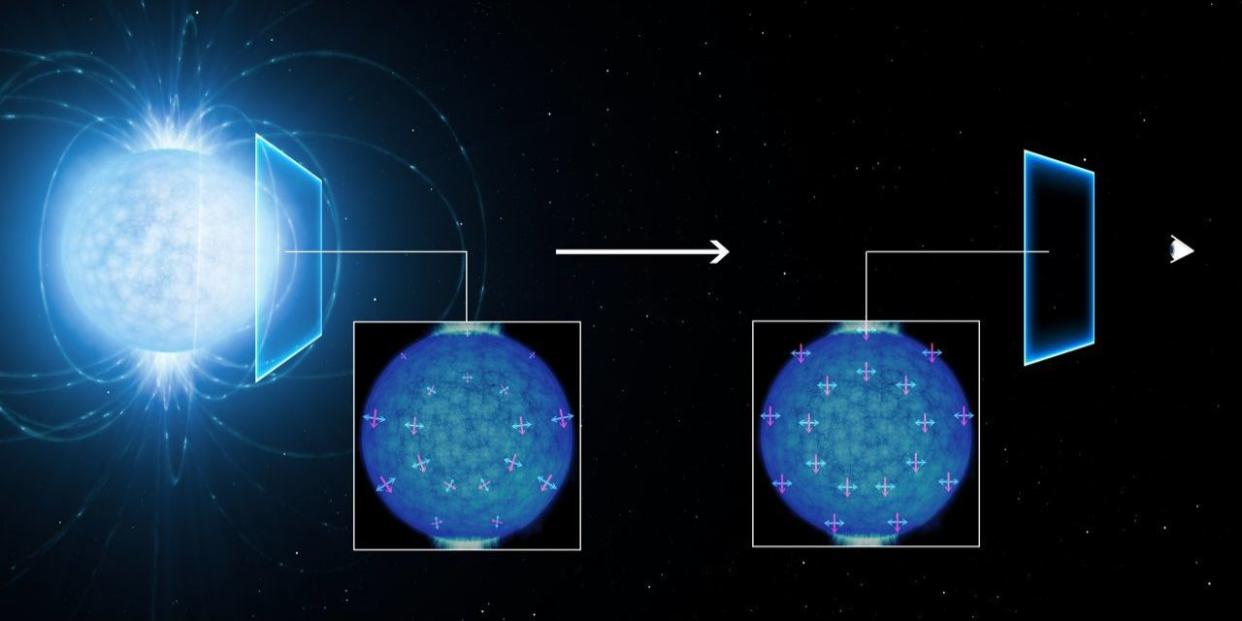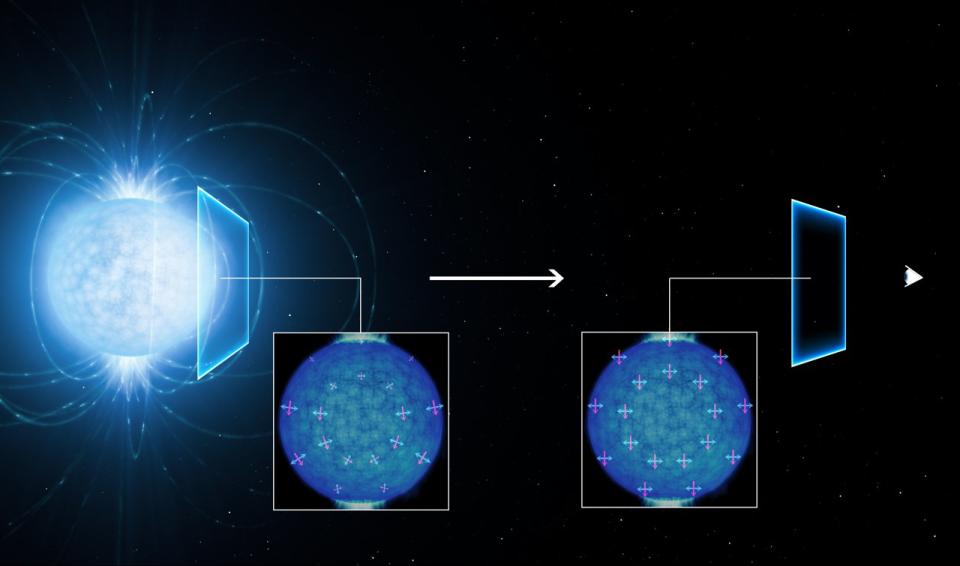Scientists Catch "Virtual Particles" Hopping In and Out of Existence


About 400 light-years from here, in the area surrounding a neutron star, the electromagnetic field of this unbelievably dense object appears to be creating an area where matter spontaneously appears and then vanishes.
Quantum electrodynamics (QED) describes the relationships between particles of light, or photons, and electrically charged particles such as electrons and protons. The theories of QED suggest that the universe is full of "virtual particles," which are not really particles at all. They are fluctuations in quantum fields that have most of the same properties as particles, except they appear and vanish all the time. Scientists predicted the existence of virtual particles some 80 years ago, but we have never had experimental evidence of this process until now.
Seeing the Invisible
How can we possibly see such a thing? One of the properties virtual particles have in common with actual particles is that they both affect light. In addition, intense magnetic fields are thought to excite the activity of virtual particles, affecting any light that passes through that space more dramatically.
So a team of astronomers pointed our most advanced ground-based telescope, the European Southern Observatory's Very Large Telescope (VLT), at one of the densest objects we know of: a neutron star.
Neutron stars have magnetic fields that are billions of times stronger than our sun's. Using the VLT, Roberto Mignani from the Italian National Institute for Astrophysics (INAF) and his team observed visible light around the neutron star RX J1856.5-3754 and detected linear polarization-or the alignment of light waves according to external electromagnetic influences-in the empty space around the star. This is rather odd, because conventional relativity says that light should pass freely through a vacuum, such as space, without being altered. The linear polarization was to such a degree (16 degrees to be precise) that the only known explanations are theories of QED and the influence of virtual particles.
"According to QED, a highly magnetized vacuum behaves as a prism for the propagation of light, an effect known as vacuum birefringence," Mignani says. "The high linear polarization that we measured with the VLT can't be easily explained by our models unless the vacuum birefringence effects predicted by QED are included."
How Do You measure Something That Doesn't Always Exist?
Vacuum birefringence was first predicted in the 1930s by Werner Heisenberg and Hans Heinrich Euler. It was an exciting time for the development of quantum mechanics, when many of the advanced theories still studied today were developed.
In the quantum realm, matter behaves very strangely to say the least. It violates both Newton's classical laws of physics and Einstein's theories of relativity and gravity. Matter can exist in two separate places at once. Entangled particles, separated by miles, can influence each other instantaneously. As far as we can tell, the smallest building blocks of matter exist with multiple, or even infinite properties, known as quantum states, until they are observed or measured.
Fortunately, we can model and even predict some quantum phenomena, and we do this using wave functions. A wave, such as a sine curve, is represented by an equation that has multiple correct values to make it a true mathematical statement. This same basic principle can be applied to physical models of particles that exist in different locations, or with different properties, or sometimes don't exist at all. When the particles are measured, the wave function collapses, and the matter only exists with one set of properties like you would expect. The researchers were able to measure the virtual particles around a neutron star indirectly, by measuring the light that passes through them.
These concepts are so profound that Einstein and Niels Bohr famously debated, at length, whether the universe even exists as a tangible smattering of matter across the void, or if it is a fluid conglomerate of infinite possible realities until we observe it. The first experimental evidence of vacuum birefringence-absurdly strong electromagnetic forces tugging at the very foundations of matter-reminds us that this is still an open-ended question.
Source: European Southern Observatory
You Might Also Like

